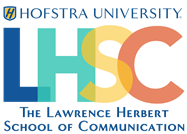State University of New York colleges and universities that were offering the Johnson & Johnson vaccine to students had to halt their programs for two weeks recently after the federal Centers for Disease Control hit pause on the vaccine because potentially deadly side effects were reported in six cases. Now, however, the J & J vaccine is once again being offered to students at state schools like Stony Brook University, SUNY Old Westbury and Suffolk County Community College.
The CDC recommended continuing the use of the Johnson & Johnson vaccine after investigators deemed it safe for the overwhelming majority of people. The J & J vaccine, also known as the Janssen vaccine, was held up after blood clots were reported as a potential side effect.
“We did get about a thousand doses or so,” Lawrence Zacarese, SBU’s assistant vice president of campus safety, said. “When the pause came, we paused. And when it was unpaused and we were able to do it again, we continued to offer those up.”
The J & J vaccine is being offered at 34 SUNY schools across the state. Since it only requires one dose, students leaving campus for the summer do not have to worry about returning for a second dose if they take advantage of the program.
Before students recently became eligible to be vaccinated on their campuses, some SUNY schools were distributing vaccinations to the general public. On March 15, Cuomo announced that three mass vaccination sites would be open to public at Long Island state schools, including SCCC’s Brentwood campus, SBU’s Southampton campus and SUNY Old Westbury.
“The Southampton campus was sort of a logical choice for East End access,” Zacarese said, “and to try to push further east and extend the availability for folks on the East End.”
SBU’s vaccination sites administer the Pfizer-BioNTech and Moderna vaccines to the general public, Zacarese said. According to the New York State Department of Health’s website, SCCC and Old Westbury are offering the Pfizer-BioNTech vaccine.
“They are at this point vaccinating about 800 people a day, seven days a week,” said Michael Kinane, chief communications officer for SUNY Old Westbury. The state-run vaccination site is located at the school’s Clark Center in Glen Head, which normally serves as a gymnasium. Converting it from a place to watch a basketball game to a vaccination center was a fairly seamless transition, according to officials.

At the start of the pandemic, the Clark Center was made an alternate-care facility for Covid-19 patients, outfitted with around a hundred beds. It went unused, but the center still had a purpose for the state.
“When the state started to see the availability of more doses and started to look for other places where that was needed, [it] kind of just made sense,” Kinane said. “The groundwork had already been done to turn us into a facility that could handle that kind of population.”The full interview with Michael Kinane, chief communications officer for SUNY Old Westbury.
SBU made similar changes to build out the vaccination site on its Southampton campus. “The good news is that we had the gym, where the site is located, that’s on the campus but not directly connected to it,” Zacarese said. “The bad news for us is that it was a building that’s not necessarily utilized, so we did have to make some modifications and changes to get it to be able to have a throughput of a thousand people a day in.”
The influx of people entering the SUNY Old Westbury campus to be vaccinated has caused no problems to date, Kinane said, because around 90 percent of the school’s classes are currently online, so there are relatively few students on campus. “I wouldn’t even call it a disruption,” he said. “I think if we were operating in normal times with our regular ins and outs of students, faculty and staff, it might be more problematic.”
The circumstances are similar at SCCC’s Brentwood campus. “Our campuses, prior to the launch of the vaccination PODs [points of delivery], had limited traffic and students due to the pandemic,” Biondo said. “We have had to adjust traffic flows, move some classes and adjust schedules.”
Hosting a vaccination site is at no cost to SCCC. “The college is reimbursed for out-of-pocket costs related to the vaccination PODs,” including public safety and sanitation, Biondo said.
SUNY Old Westbury, on the other hand, had not received such funding from the state as of press time. “If some funding comes our way, that will be great,” Inane said. “We actually will need some help making sure we can get our facilities back in shape when this goes away, because it’s kind of a big imprint.”

After the announcement that SBU’s Southampton campus would host a vaccination site, the school had to prepare. “We work very closely with our town partners and our state partners to set up an appropriate traffic pattern and appropriate parking,” Zacarese said.
As of May 3, 525,300 Suffolk residents had been fully vaccinated, and SBU had dispensed roughly 325,000 of those doses. “While it’s not a precise number, it’s actually pretty close,” Zacarese said.
“We’re very proud of that,” he continued. “It’s only accentuated by the fact that the process had been very well streamlined from start to finish. I think it’s a huge feather in the cap, and it just shows Stony Brook once again stepping up as a regional partner for everybody in a time of crisis.”
Kinane said he sees helping to vaccinate the public as a duty of state institutions of higher learning. “Part of the public service mission of the public institution is to step up when the public needs you to,” he said.









